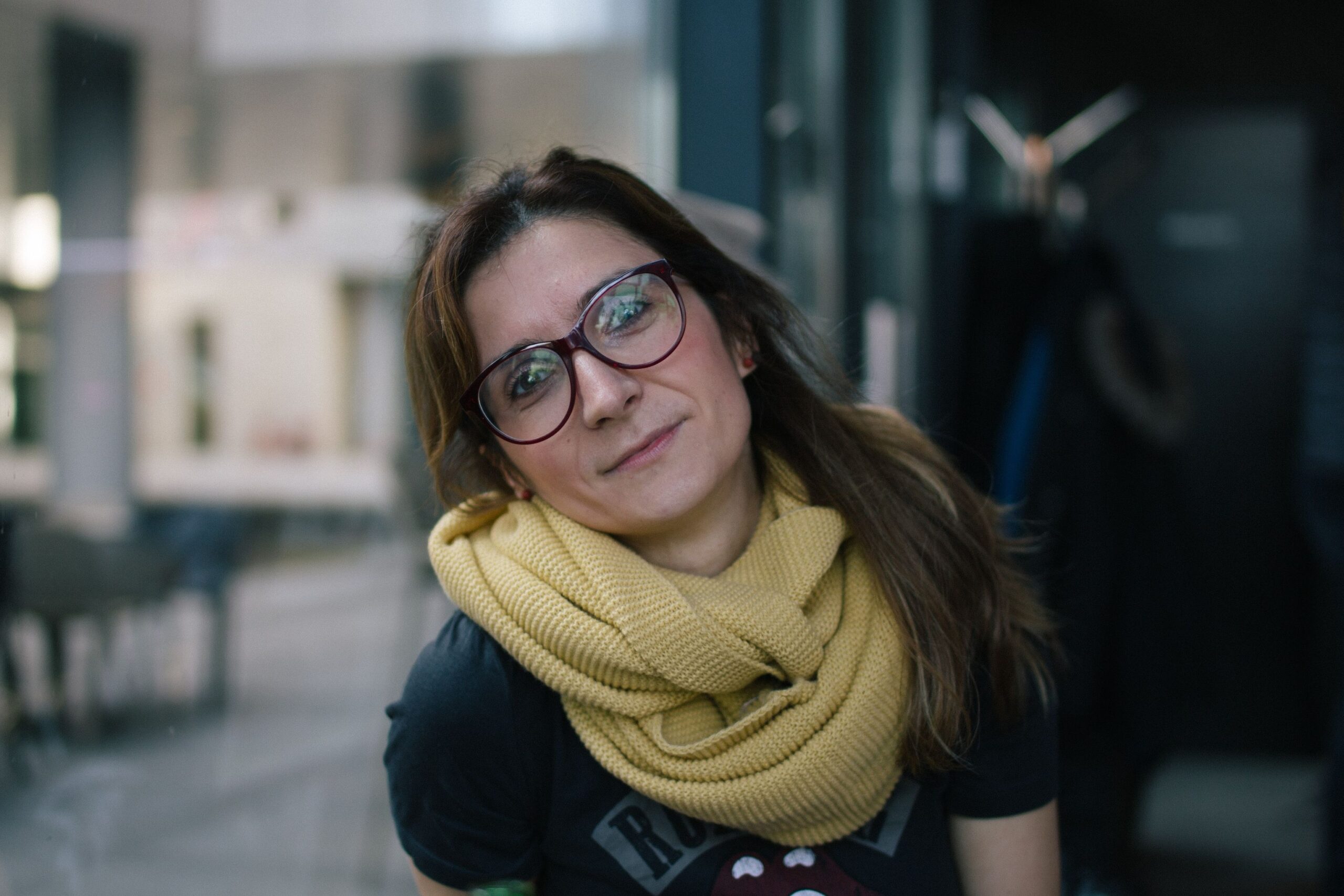Interviews

Ana Rajković-Pejić
PHD in modern and contemporary history, University of Zagreb
Ana Rajković-Pejić holds a PhD in modern and contemporary history from the University of Zagreb, Croatia. In her research she focuses on women’s roles and resistance within the labor movement in the period between the two World Wars. She is the author of Long female march. The position of female workers and women’s activism in Croatia between the two World Wars (2021); The Position of Female Workers in Yugoslavia between the Two World Wars – a Historical Perspective 1918-1939. She is also a member of the editorial board of the journals Novi Plamen. The Journal of the Democratic Left for the Politica, Social and Cultural Issues and a member of the Centre for Women’s Studies Zagreb.
- Hi Ana, before we go into more detail, could you tell us something about your research interests and background?
I got my Ph.D. at the University of Zagreb with a thesis regarding ideological conflicts within the labor movement in interwar Yugoslavia, primarily between social democrats and communists. My current affiliation is to the Croatian Institute of History – Department for the History of Slavonia, Syrmia, and Baranya. In my research I am focused on social and gender history in the twentieth century. My current research is concerned with the everyday life of workers in socialism: how did they spend their free time, where did they travel, etc. I would also like to explore the government mechanisms that created practices such as the annual vacations at the Adriatic Sea or winter holidays in Czechoslovakia. Before 1945, workers did not have the right to paid vacation so when socialists came to power one of their first tasks was to convince the labor force to go on holidays outside of their place of residence.
- You have researched women’s activism between WWI and WWII in Croatia. What are some insights you uncovered about this intriguing topic?
I found some extraordinary facts about brave women who fought not only for their right to vote or for equal wages, but also for rights concerning strikes, abortion, and free love. Many of these women have been marginalized in historiography. So, on some level, I tried to give them a voice. The fact that these women were everything but united in their fight also seems very important to me. This was primarily determined by their political and class status. For example, for female workers’ activism was conditioned by their social status so they organized strikes, demonstrated, etc. On the other hand, women with a higher social status were more focused on questions such as the right to education. Also, there were some women’s magazines like Glas udovica. List udovica i samostalnih žena (The Voice of Widows. The Journal of Widows and Independent Women). Some of these magazines held the belief that women should leave their places of employment in favor of their husbands and brothers.
- How relevant do you consider activism in (and for) academia?
I think that activism should and must be an important part of academia. In my opinion, the times when scholars were cut off from society to copy manuscripts are behind us. Academia should not ignore changes in the society in which it operates and pretend to be above what is happening around us. I believe that we should all follow the example of Andrea Pető who is very vocal regarding women’s rights in Hungary. I believe that activism is extremely relevant in and for academia and should be its integral part.
- You are currently researching the social practices of workers in socialism while focusing primarily on Đuro Đaković, a Yugoslav metal worker, communist, and revolutionary. Could you tell us more about Đaković and his legacy?
Regarding Đaković’s legacy as a communist and revolutionary, it would be fair to say that it is minorized due to the prevailing negative attitude towards socialist heritage. Nowadays there is no museum or institution that would preserve his heritage. Even the house where he was born and grew up, which was turned into a memorial home during the period of socialist Yugoslavia, collapsed. So, it is very interesting that for most people Đuro Đaković does not represent a person but a factory. When we are talking about the legacy of this industrial giant we are talking about Yugoslavia’s industry during the socialist period. So, the story about “Đuro Đaković” from Slavonski Brod is also a story about other big Yugoslav economic flagships, such as the shipyard Uljanik from Pula, the metallurgical giant Željezara Sisak or the shoe factory Borovo near Vukovar. During the 1970s this industry employed tens of thousands of workers and was the driving force of not only the region but also the whole state. Today these factories employ a significantly smaller number of workers. All the above caused a very vibrant cultural memory formed by the people whose lives have been strongly connected to the factory from Slavonski Brod.
- Your recent exhibition in Slavonski Brod was dedicated to the hundredth anniversary of the foundation of “Đuro Đaković”, the first Yugoslav factory of wagons, machines, and bridges, which was also the first of its kind in Southeast Europe. The exhibition provides insight into the development of the “heavy” industry, as well as different modes of workers’ leisure time. What were some of the challenges tied to the creation of this exhibition (technical and/or content related)? How satisfied are you with the audience reception?
Yes, I am very proud of this because it is the first time that the factory is presented in a historiographical sense. The exhibition consists of three parts. The first part presents the factory and its development during the interwar period, the second part includes a socialist period when “Đuro Đaković” reached its peak, and the third part is about, as you said, different modes of workers’ leisure time – summer vacations, trips, sports, cultural activities, etc. The most challenging part of this project was to find workers who are willing to let us use their family photos and who are willing to share some personal memories. I was very satisfied with the audience reception and with the media coverage at the opening of the exhibition. I hope that the exhibition will become a permanent point, as a place of remembrance of the former industry, but also an important part of the local cultural memory.
- Are you planning on setting up more exhibitions? Or are you curious about some other formats as well?
Currently I am working with Kosjenka Lazslo Klemar on an exhibition about the women labor force in the textile industry in the twentieth century, which should open in October in the Technical Museum Nikola Tesla in Zagreb.
Congrats! That sounds fascinating, could you tell us more?
The title of the exhibition is “Work and Resistance”, and the aim is to show different forms of resistance of the female labor force during the 20th century in the textile industry. The main concept is related to factories such as “Varteks” and “Kamensko”. In the framework of the case study, we would like to point out activities such as strikes and negotiations for better working conditions, but also the attitude of employers towards the female workforce. Moreover, we will also focus on the involvement of women in different factory units, such as women’s communities that represented women’s organization inside the workplace.
- You are also writing a book. Please tell us more about that.
The book presents a continuation of my research related to “Đuro Đaković”. In some way it is an extension of the previously mentioned exhibitions. The difference is that my main focus in the book is the everyday life of workers in socialism. So, I took the factory “Đuro Đaković” as a case study and analyzed different ways how workers spent their free time, but also their time in the factory. I did not analyze production processes but different problems which appeared at the workplace, such as alienation of property, alcoholism, leaving the factory before the end of working hours, etc. I also explore the very specific position of the female workforce because this was – and in many respects still is — the industry in which the male workforce was dominant. I tried to get the full picture of the workers’ lives. Even though this is very challenging, I hope I succeeded. I believe it is very important to get as much of the complete picture as possible so that we can reconstruct the social aspects of socialist Yugoslavia.
- In the context of teaching, how do you imagine history education? And more specifically, what do you consider important when it comes to teaching about controversial (or even somewhat tabooed) topics?
My point of view maybe is not relevant since I work in the Institute where we are primarily focused on researching and not so much on teaching. Nevertheless, I worked in a school for several years, so I am familiar with the challenges that students and teachers face when dealing with controversial topics. During the teaching process, you can see students’ ideological positions, especially when dealing with topics related to the Second World War. Their attitudes are mostly determined by what they hear at home or by the experiences of their family members. This is why I think it is extremely important to deal with these topics as best as possible, and by no means to run away from them or ignore them. Namely, these topics greatly influence the formation of political beliefs, so in this sense, we must raise politically literate citizens who can think independently based on what they have acquired during their education.
- What are some topics you would like to explore in the future?
One of the topics that I would like to deal with in the near future, keeping in mind that the interwar period is in some way my research period, is the issue of venereal diseases (gonorrhea, syphilis) after World War I when many countries faced a problem while trying to combat these diseases which presented serious health and social issues. For example, countries like Ireland and USA declared war on sexually transmitted diseases in the 1920s. I want to explore it from the gender and class point of view because women were presented as the main culprits, while people from the lower class were unable to get appropriate treatment. After that, who knows…
Interview: Katarina Damčević

